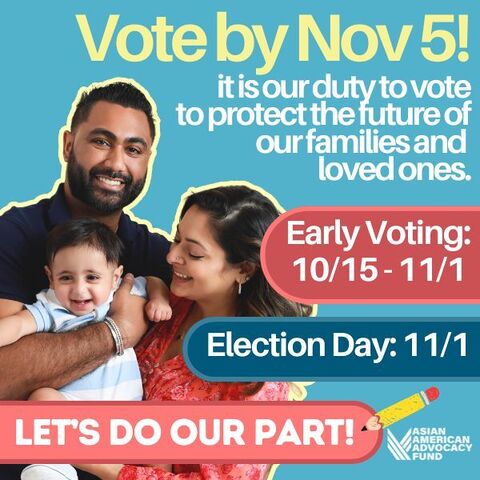Letters from Readers
Hawaiian Tulsi Gabbard, who became the first Hindu in the U.S. Congress, was quoted in your article (“Tulsi Gabbard Breaks Barriers,” December 2012) as saying that Hindus feel diffident or not understood in America.
This doesn’t make sense. We Hindus have luxurious houses and we own major companies. Our children have equal rights as the citizens of the United States. We have everything in this country. Some of my co-workers even do puja in the office. What are we lacking as Hindus in the U.S.?
You know that we can say “Happy Diwali” and “Happy Dussehra” but not “Merry Christmas” in the corporate world. So what more freedom do you want? This country has allowed us to open temples, mosques, and Buddhist places, too. We need to thank this country and the people here and not whine anymore about us being minorities.
Chattisgarh Koon
online comment
Tulsi’s election is a sign of the times
The minorities will be the majority in America from now onwards. We can see all kinds of diverse candidates getting elected—like Tulsi. Now, we see an openly lesbian senator, too. Finally the government looks like what the majority people want it to look like, not just a handful of people. I like Tulsi’s statement when she said that when she put her life on the line, no one asked about her religion!! Proud of you, Tulsi.
Rakesh Shahonline comment
Kudos for Khabar
This letter is to say that I love your magazine. It covers a good range of topics. I specially love reading Americana almost verbatim. Bill Fitzpatrick does a very good job explaining America and its culture in very simple language. Last month’s article “Jerusalem to Jodhpur” was very well written and reminded me of the book Autobiography of a Yogi by Paramahansa Yogananda, who loved Christianity as much as Hinduism. My family celebrates Christmas with the same enthusiasm as Diwali. Yoganadaji said he was a world citizen, not American or Indian or Egyptian, and respected all religions like Gandhiji.
Chai Time is another great column, with “Did That Really Happen?” and “Quota of Quotes,” etc. Very interesting compilation and humor. Hats-off to Melvin Durai for his great work.
In Satyalogue, Dr. Oza explains complex human problems from Gandhiji’s point of view and he does a fantastic job. His in-depth knowledge of the Mahatma’s writings is commendable.
Last but not the least I love reading Bollywood Buzz and Desi World.
I have been in this country for over 30 years but have not seen a free magazine of this quality which serves the community so well.
Ajay MehrotraOnline Comment
Violence is too common
Every time there is some violence and innocent citizens are killed, the public is outraged and demands stricter gun control laws. The politicians make a big deal of the tragedy and try to win public support. But in reality they never pass any sensible laws about obtaining handguns and assault rifles.
In the aftermath of recent violence in Connecticut, people are angered again. Expressing support and sympathies towards families of victims and holding candlelight vigils are only superfluous acts. We need to change our society and remove violence of any kind—be it in sports or on our streets. No laws can prevent violence, unless all the people try hard to be nonviolent.
We live in a violent society. Innocent people die in numerous incidents every year. However, we are only sensitive to the crimes that happen in our cities. More innocent people including children and women die in countries around the world and we do not seem to care about them. In Iraq and Afghanistan wars thousands of young and innocent children are killed by the American forces. In Gaza and West Bank Israelis kill hundreds of innocent Palestinian people and we keep quiet. We say that these are collateral deaths in a war zone. Drone attacks have killed many Afghans in recent months. America needs to stop invading other countries in the name of peace and national security and stop exporting billions of dollars worth of weapons to other countries.
Arif Chaudhryby email
Songs rule in Indian cinema
Indian cinema has come a long way in the last 65 years in promoting and popularizing music and songs of all genres. India makes over 400 films per year and every film has at least 8 songs and among them are at least one or two duets. No other country in the world churns out so many movies and so many songs. A film’s box office success depends on how good are its songs. No wonder the producers spend almost half the budget of making entire film in picturizing songs. Stars are flown from one country to another just to shoot one or two lines! No wonder, nonfilmy songs have become things of the past and nonplayback singers hardly get by.
In the days of K. L. Saigal and Pankaj Mullick there were no duets because the singers’ ego prevented them cooperating with co-singers. In the early days, Naushad, Anil Bishwas, and S. D. Burman were reluctant to include duets in their compositions. For example, “jaaye to jaaye kahan” (Taxi Driver) and “na ye chand hoga” (Shart) could have been made duets. But Raj Kapoor changed the singers’ attitude with the film Barsaat. This musical film was a trendsetter. “Chhod gaye balam” was the first romantic duet in the voices of Lata and Mukesh and was the first film for composer duo Shankar-Jaikishan. Subsequent films of Raj Kapoor such as Aah, Awaara, Shri 420, Sangam broke box office records because of their romantic duet songs.
Shankar-Jaikishan and O. P. Nayyar were the most prolific composers who popularized duets more than any other composers and gave us evergreen songs that are sung even today. R. D. Burman and Laxmikant-Pyarelal followed suit and gave some nice duets, too. Composers’ use of raag Bhairavi extensively in many of the duets is the main reason why duets are so popular. Lata and her sister Asha were then reigning queens in playback singing. Had it not been for them, singers like Mukesh, Rafi, Hemant Kumar and Kishore Kumar would not have become great singers. Their duets made them household names around the world.
In the middle of 1980s and continuing throughout 1990s Alka Yagnik displaced Lata as the undisputed queen of the romantic songs. There were other female singers like Anuradha Paudwal and Sadhna Sargam (Lata clones) and Kavita Krishnamurthy, but they were no competition to Alka. Her duets with Kumar Sanu, Udit Narayan, Abhijeet and Sonu Nigam are not only chart busters but most melodious and romantic songs ever created by maestros Nadeem-Shravan, Anand-Milind and Anu Malik who also have won many awards. They have composed all kinds of music, be it fast-track, sentimental, or dance numbers. But their forte was always melody. Most of their compositions were inspired from old time ghazals, Westerns and other charts. Lyricists Anand Bakshi and Sameer have penned almost all of these songs.
I find sweetness and sexiness in Alka’s voice more mesmerizing because she does not sing in high pitch (sharp) like Lata. Her voice matches and complements voices of male singers of her time more than even Lata’s and Asha’s. Hence, it is no miracle that Alka Yagnik has captured hearts of millions of music lovers and was nominated 35 times and won 7 coveted Filmfare awards for best female singer, while Kumar Sanu was nominated as many times and won 5 consecutive awards in a short span of 10 years. Alka Yagnik holds the record of getting nominated for consecutively 14 years from 1992 till 2005. In Khalnayak L-P [Laxmikant-Pyarelal] made Alka lead singer instead of Lata or Asha for the first time and won the Filmfare award! These singers had become so popular that Lata and Asha were begging to sing duets with Kumar Sanu and Udit Narayan so that they can stay in business. I went through the discography of Anu Malik, Nadeem-Shravan, and Anand-Milind and found only one duet of Lata-Kumar Sanu “tujhe dekha to jaana” (Dilwale Dulhaniya…) and one duet of Asha-Kumar Sanu “chehra kya dekhte ho” (Salami).
Even though I grew up listening to songs of 50s and 60s, I have never enjoyed them as much as I have enjoyed songs of 80s and 90s. Kumar Sanu-Alka Yagnik duets like “bazigar-o-bazigar” (Bazigar), “yeh dua hai meri” (Sapne Sajan ke), “aisi deewangi” (Deewana), “mehfil mein bar bar” (Soldier), “chura ke dil mera” (Main Khiladi Tu Anadi), “pyar mein dil diya” (Anari), “mujhse mohabbat ka izhaar” (Hum Hai Rahi Pyar ke) are only a handful of songs that come to mind that blow away your senses. I can list similar Alka’s duets with Udit and Sonu, too.
These songs are preppy, lively, and full of romance in every word and every note. They fill your heart with joy and love that keep you younger for many years to come. This era is truly a diamond era in Indian film music, and duets embellish romanticism.
Manju GhoshMacon, Georgia
========================
What’s on YOUR mind?
We welcome original, unpublished letters from our readers. You could either respond to a specific article in Khabar or write about issues relevant to our community. Letters may be edited for length and other considerations. Longer submissions by readers may be considered for the “My Turn” column.
Email: letters@khabar.com • Fax: (770) 234-6115.
Mail: Khabar, Inc. 3790 Holcomb Bridge Rd. Suite 101, Norcross, GA 30092.
Note: Views expressed in the Letters section do not necessarily represent those of the publication.
Enjoyed reading Khabar magazine? Subscribe to Khabar and get a full digital copy of this Indian-American community magazine.
blog comments powered by Disqus














